“People don’t really change their minds.
They simply make new decisions based on new information. In the absence of new information, there will be no new decision.
Give a person the same information you’ve given them in the past and they’ll make the same decision they’ve made in the past.
Want a new decision? Provide new information.
This new information can be facts and details or it can be a new angle of view“
It boils down to a question of either.
- Providing new information as the basis of a new decision, or
- Projecting a new perspective and emotional spin on old information.
- Or both.
If you’d like to hear what “both” sounds like, take a listen to this bit of brilliance by Ogilvy UK:
The new information is the “why” behind the speed limit — the statistics on survival rate of children hit by cars going 40 vs 30 miles per hour, respectively.
The new perspective is provided by the dramatization that occurs in your head when you hear that dreadful silence after the impact vs. the cries of a small child.
And here’s another ad that layers on a new perspective to a new piece of information for maximum persuasive power:
In that ad the new information was “Just 2-3 breaths of toxic smoke and you’re unconscious”
For an ad taking a pure “new information” approach, check out this golden oldie:
And for a pure “make people feel differently about stuff they already know” ad take a gander at this billboard:
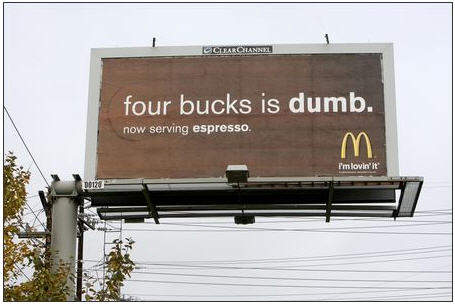
It’s not like Starbucks customers didn’t know they were spending that much on coffee.
Yet seeing it stated so bluntly in print like that drives home an emotional recognition that, yeah, it is kind of “dumb” to pay that much for a friggin’ latte.
And perhaps the best modern example of “give them a new perspective on what they already know approach is the famous “Damn Right Your Dad Drank It” campaign for Canadian Club Whiskey.
The New Perspective Campaign that Saved Canadian Club Whiskey
I first covered this campaign in my post on Brandable Chunks, but to really understand the genius of the campaign, you have to understand the problem it was trying to solve.
Back in 2007, Canadian Club’s sales were declining and the general consensus among the younger generation of drinkers was that it was an old man’s drink.
This was back before the whiskey and bourbon renaissance. Cocktails were cool, but whiskey less so, and even among whiskey’s CC was the opposite of hip.
So the campaign (created by Energy BBDO) used what people thought they already knew about the brand and caused ‘em to feel differently about it.
They transformed “an old man’s drink” to “your old man’s drink back when he was more of a man than you are”
Take a look:
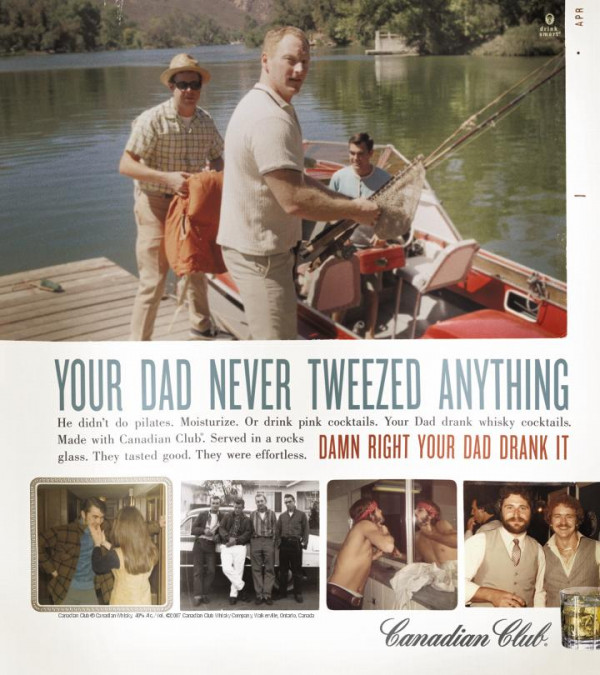
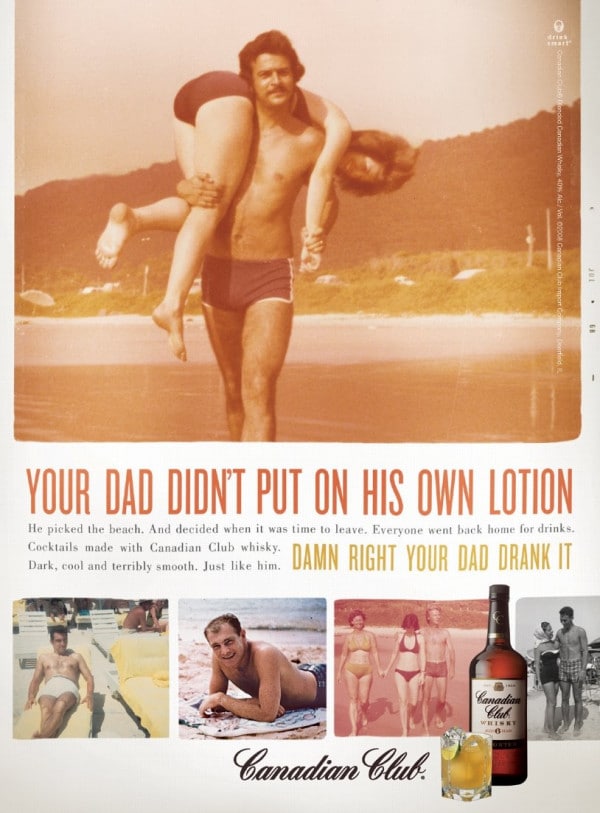
Sales soared immediately upon launch of the campaign, ending a 20 year sales slump, with sales quickly outpacing the then category-leader, Crown Royal.
And this strategy of “change how they feel about what they already know” brings us to the Legend for this post’s lesson.
Cadillac and “The Penalty of Leadership
Theodore MacManus is an automotive advertising legend, and is perhaps best known for his work with Cadillac, specifically for his ad titled: “The Penalty of Leadership.”
But again, to understand the genius of this ad you have to understand the position that Cadillac was in before the ad launched.
Back in 1915, Cadillac had recently introduced a new V8 engine which totally eclipsed the competition.
It was a V-8 for heaven’s sake, back when everyone else was using straight eights or straight sixes.
However, the new motor was not totally without some teething problems.
And the competition used those problems to spread rumors and innuendo that Cadillac had brought the V-8s to market too early.
Packard even created ads saying as much. They wanted their straight eights and sixes to look tried and true compared to Cadillac’s innovative but “risky” V-8s.
So that’s what the reading public already “knew” about Cadillac when they read the following in the Saturday Evening Post of January 2nd, 1915.
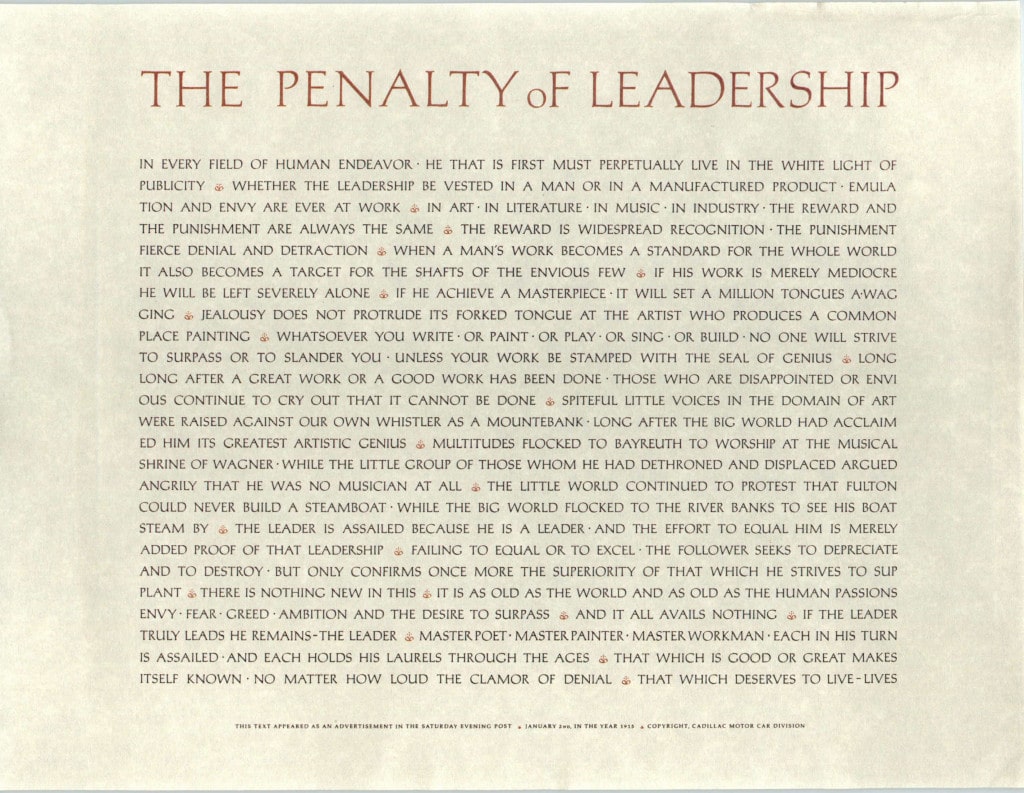
If you’re having trouble reading the copy, here’s what it says (paragraphing as symbolized in the ad):
In every field of human endeavor, he that is first must perpetually live in the white glare of publicity.
Whether the leadership be vested in a man or in a manufactured product, emulation and envy are ever at work.
In art, in music, in industry, the reward and punishment are always the same.
The reward is widespread recognition; the punishment, fierce denial and detraction.
When a man’s work becomes a standard for the whole world, it also becomes a target for the shafts of the envious few.
If his work is mediocre, he will be left severely alone—if he achieves a masterpiece, it will set a million tongue a-wagging.
Jealousy does not protrude its forked tongue at the artist who produces a commonplace painting.
Whatsoever you write, or paint, or play, or sing, or build, no one will strive to surpass or to slander you unless your work be stamped with the seal of genius.
Long, long after a great work or a good work has been done, those who are disappointed or envious, continue to cry out that it cannot be done.
Spiteful little voices in the domain of art were raised against our own Whistler as a mountebank, long after the big would have acclaimed him its greatest artistic genius.
Multitudes flocked to Bayreuth to worship at the musical shrine of Wagner, while the little group of those whom he dethroned and displaced argued angrily that he was no musician at all.
The little world continued to protest that Fulton could never build a steamboat, while the big world flocked to the river banks to see his boat steam by.
The leader is assailed because he is the leader, and the effort to equal him is merely added proof of that leadership.
Failing to equal or excel, the follower seeks to depreciate and to destroy—but only confirms once more the superiority of that which he strives to supplant.
There is nothing new in this.
It is as old as the world and as old as human passions—envy, fear, greed, ambition, and the desire to surpass.
And it all avails nothing.
If the leader truly leads, he remains—the leader.
Master-poet, master-painter, master-workman, each in his turn is assailed, and each holds his laurels through the ages.
That which is good or great makes itself known, no matter how loud the clamor of denial.
That which deserves to live—lives.
Notice that the ad never directly mentions:
- Cadillac
- The V-8 engine,
- or Automobiles at all.
It didn’t have to — that’s what readers already knew.
MacManus wasn’t trying to give readers new information. He was trying to make them feel differently about that information.
And boy did he ever!
The ad ran only once, but Cadillac was immediately inundated by requests for reprints. Cadillac Salesmen even carried copies of the ad to give away to prospects. Sales skyrocketed.
In fact, the ad was still being reprinted and used by Cadillac into the 60s, when Elvis received a copy and promptly had it framed and hung in his office.
As Theodore MacManus himself said about his style of advertising:
“The real suggestion to convey is that the man manufacturing the product is an honest man, and that the product is an honest product, to be preferred above all others.”
And if you’re wondering why MacManus didn’t run the ad more than once, the answer is he didn’t have to. Once sales picked up, it was time to write a new ad, rather then re-run the old.
Here’s one of the print ads he ran shortly after “The Penalty of Leadership”
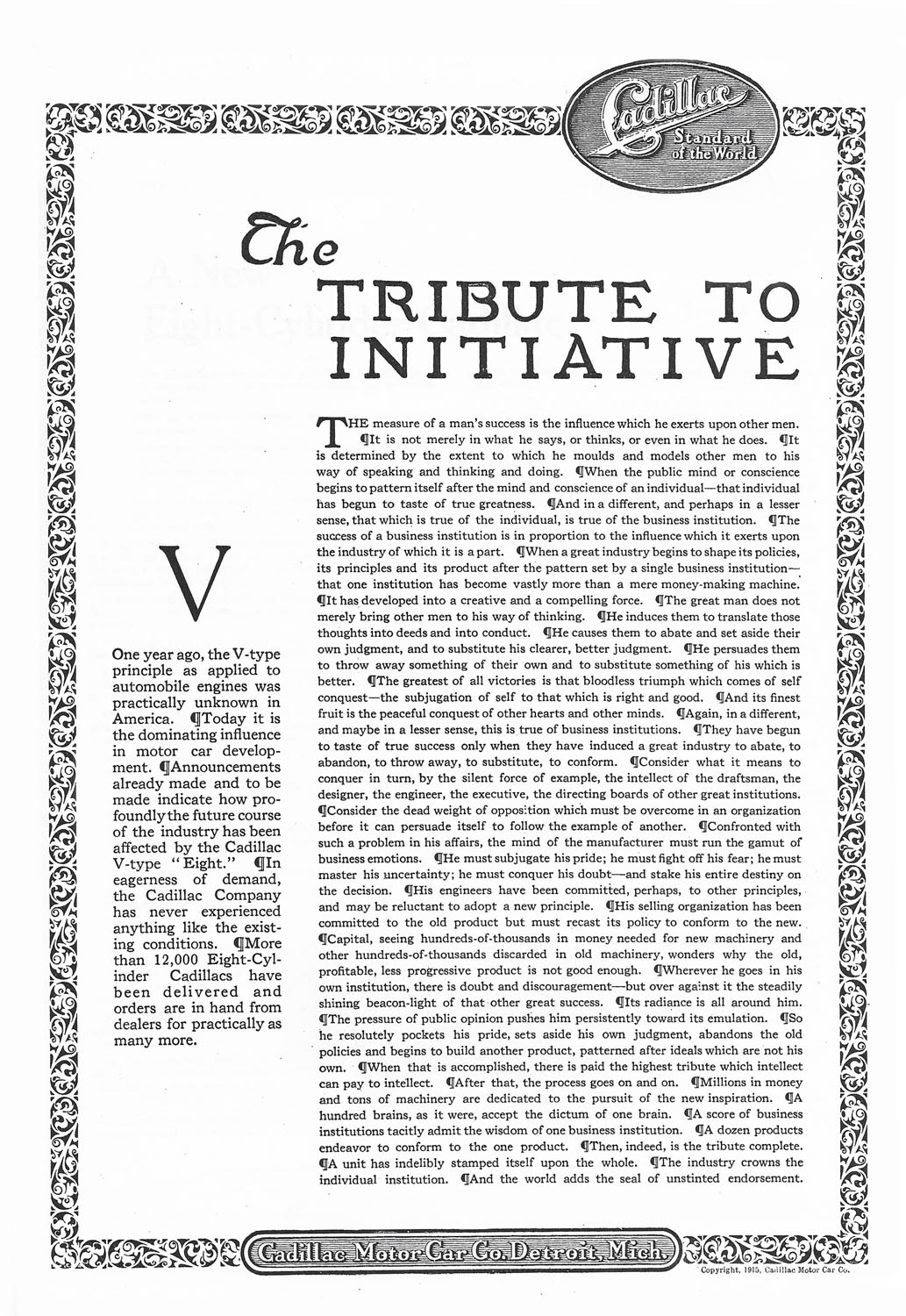
Note that once sales skyrocketed and other manufacturers began to copy Cadillac’s V-8 engine, then THAT became the fact MacManus used to create perspective and persuasion.
The Take-Aways for YOUR Advertising
Too often inexperienced copywriters and advertising clients want to persuade with copy points — with information being pushed at the reader.
But this really only works when the facts provided are actually new, startling, and relevant. And they work best when they can be dramatized.
So before rolling those copy points into your ad, ask yourself exactly that:
Are these points new, startling, and relevant?
If not, either get yourself some better facts, or consider taking another approach.
Consider copying MacManus and provide your audience with a new perspective.
- Are You Paying for Too Much for the Wrong Keywords? - July 15, 2024
- Dominate Your Market Like Rolex — 4 Powerful Branding Lessons - July 3, 2024
- Military-Grade Persuasion for Your Branding - June 25, 2024
